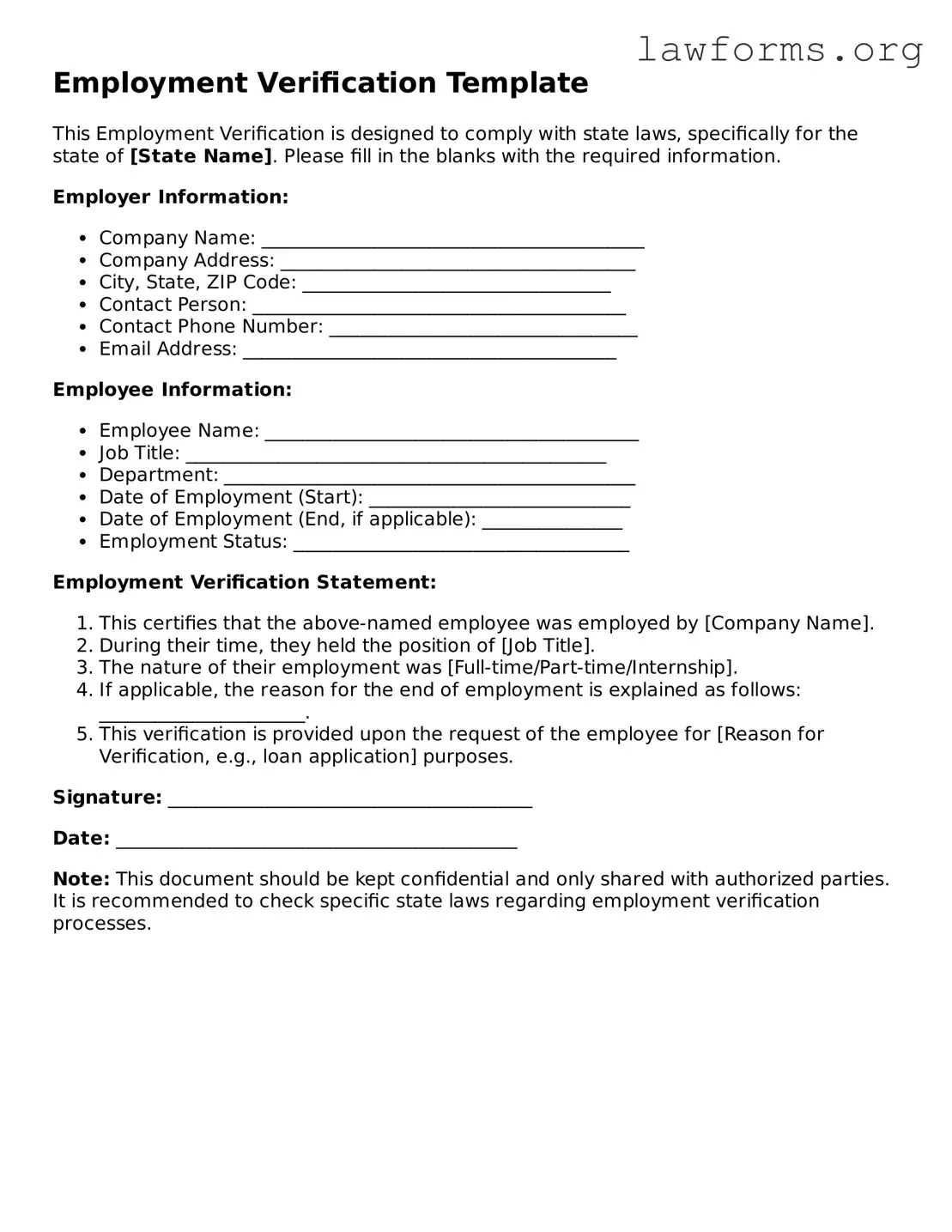Employment Verification Template
This Employment Verification is designed to comply with state laws, specifically for the state of [State Name]. Please fill in the blanks with the required information.
Employer Information:
- Company Name: _________________________________________
- Company Address: ______________________________________
- City, State, ZIP Code: _________________________________
- Contact Person: ________________________________________
- Contact Phone Number: _________________________________
- Email Address: ________________________________________
Employee Information:
- Employee Name: ________________________________________
- Job Title: _____________________________________________
- Department: ____________________________________________
- Date of Employment (Start): ____________________________
- Date of Employment (End, if applicable): _______________
- Employment Status: ____________________________________
Employment Verification Statement:
- This certifies that the above-named employee was employed by [Company Name].
- During their time, they held the position of [Job Title].
- The nature of their employment was [Full-time/Part-time/Internship].
- If applicable, the reason for the end of employment is explained as follows: ______________________.
- This verification is provided upon the request of the employee for [Reason for Verification, e.g., loan application] purposes.
Signature: _______________________________________
Date: ___________________________________________
Note: This document should be kept confidential and only shared with authorized parties. It is recommended to check specific state laws regarding employment verification processes.
